Recusol™, central air heater
-
1-apr-2009
The Recusol™ is a sustainable and cheap central air heating system, which consumes only energy for a small fan, which in most cases already is available in a building. The Recusol™ is a recuperator and a solar collector that recovers both energy from waste ventilation air and from (sun) light.
The Recusol™ consists of a transparent large area flat heat exchanger made of special polycarbonate multi wall sheets or channel plate, which has on the back side a (sun) light absorber. Due to the large surface the flow losses are small, so a small fan power is required and minor or no noise production is generated. In a feasibility study sponsored by the Dutch Ministry of Economic Affairs, program EOS, executed by SenterNovem the technical and economic feasibility was established.
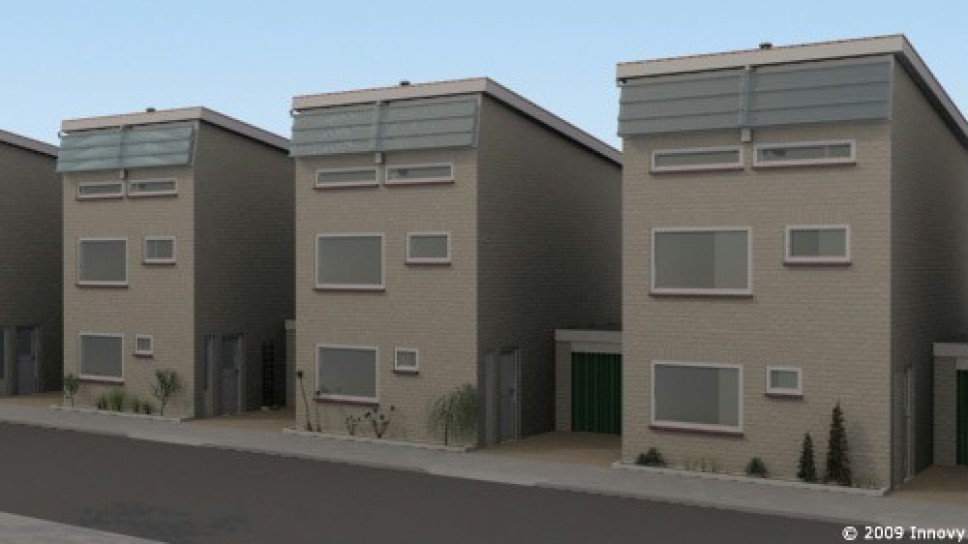
Figure 1: Example Recusol™; central air heater with energy from heat recovery and (sun) light heat
The main conclusions are:
The Recusol™ is cost effective and around 2 times cheaper in use than a conventional central heating system. With the expected increase of energy costs in the future, the reduction will be larger.
Because air is used as transport medium the cheap Recusol™ can directly use the infrastructure of an existing ventilation system, which makes it even cheaper.
Due to the high efficiency a relative small collector area is required and also a small cheap monthly storage, which is provided from the soil directly underneath the building. With this storage it is also possible to keep the house cool during hot periods in the summer, with the same equipment applied for the heating.
The Recusol™ consumes only the energy for the small fan and the water pump for the heat storage. In the winter, during long cold periods without sun, a small extra heat source might be required.
The savings on primary energy and CO2 are > 90%, while even up to a 100% if the electricity comes from a sustainable source.
The Recusol™ is a cheap way to satisfy the Kyoto protocol
The Recusol™ is also cheaper then a heat pump, because the investment costs of a heat pump are higher and the heat pump consumes more electric energy as well.
Results
It was found that due to the relative large surface a lot of (sun) light energy can be caught, while the heat recovery efficiency is high (>95%.) The losses of the (sun) light absorber are limited to the low losses already present in the heat exchanger. At cold ambient weather it is possible to transfer (sun) light in heat with high efficiency. For example at a temperature of 0 ºC the efficiency is calculated to be between 60% and 70%.
To avoid too much short circuit in the heat flow the heat exchanger should be thicker than 6 cm, while the walls between the hot and cold media should be as thin as possible. Also the air speed should be high enough to avoid heat back flow in the transported air (expressed in the Peclet number, which should be >> 1). To avoid radiation losses the front of the Recusol™ can be provided with a spectral selective layer. With these conditions the heat resistance of a 6 cm thick Recusol™ is the same as a 25 cm thick glass wool blanket. With the 2 cm transport channels on both sides the total thickness of the Recusol™ is 10 cm.
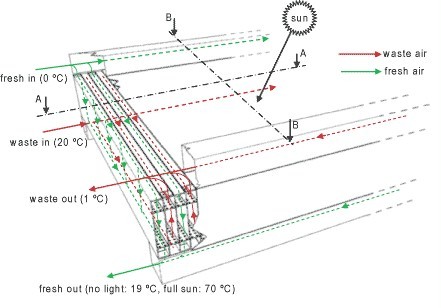
Figure 2: Recusol™ made of 4 walled polycarbonate or PMMA sheet

Figure 3: Cross section A-A cross section B-B of figure 2

Figure 4: Temperature distribution over Recusol™ at waste in 20 ºC and fresh in 0 ºC
A larger comfort is performed if the actual excess of sun heat is stored in a heat storage by an extra heat exchanger before the air enters the ventilation system of the building. This stored heat can be used at a later time if there is heat shortage. In the feasibility study it was found that monthly storage is sufficient. For this short period the excess heat can be stored directly under the building by small U-tubes pulsed around the building. Due to the short period the same storage system can be used in the summer for the storage of cold from the night air, which can cool the building during hot periods.
To avoid dirt the inlet and outlet of the Recusol™ should be filtered. Possible still present micro-organisms will be killed by regularly available high sun intensity, while with the transparent Recusol™ dirt is easy visible during inspection.
The transport channels in the Recusol™ are designed to remove condense; while possible ice depletion will be removed by temporarily turning around the flows, such that the ice will melt by the warm waste air.
Proof of principle
Before starting further development a simple proof of principle was executed by Innovy in Alkmaar. A test sample is produced from adapted polycarbonate multi wall sheets in which small air distribution holes are stabbed with a pin. After that new channels are assembled by gluing the adapted channels with thin polycarbonate plates used for the heat exchanger. The small sample is placed in a test rig representing a down scaled building with a scale of 1:67.
Because standard available multi wall sheet is applied with 8 mm wide channels it was not possible to fabricate the optimal design with 5 mm wide channels. If 5 mm wide, there are 200 channels per m with a K-value of 600 W/K per m² Recusol™, which is very large for an air to air heat exchanger. If 8 mm wide, the K value is 234 W/K per m² Recusol™, which is still rather high for an air to air heat exchanger but 60% less than for a 5 mm channel.
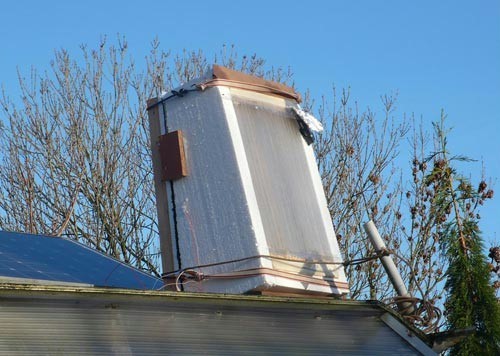
Figure 6: Test sample and test rig on a 1:67 scale of a standard family house.
Because the heat exchange channels were glued instead of extruded, one channel leaked and effectively 2 of the 19 channels were blocked by rest glue material, so 86% of the sample did operate well. Also due to the glue the sample was less transparent: around 40% of the light went through the sample and was absorbed by the black absorber, around 20% was reflected and around 40% was absorbed by the heat exchange channels and transport channels.
The test rig represents a well insulated (12 cm thick glass wool and HR++ windows) standard family house (a house between two other houses) with the characteristics given in the table below:

Table 1: Specifications of the test rig and the standard family house it represents
The internal heat sources are electric equipment, people, cooking, passive (sun) light through windows, etc.
A test performed around the shortest day of the year is shown in figure 7.
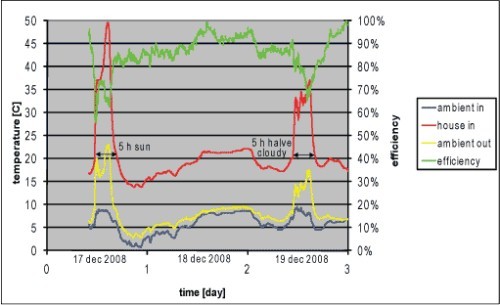
Figure 7: test at Alkmaar from 17 December up to 19 December 2008
From the test can be concluded that the recovery efficiency of the waste air heat is between 80 and 95%, which is rather high for a far from perfect test sample. The solar absorption efficiency is 50%, from which 40%-point is recovered by the heat absorber and 10%-point by the heat exchanger, absorbed by the not perfect transparent channels, while approximately 22%-point is reflected by the not perfect transparent channels. The remaining 28%-point is lost in the waste air exhaust of the Recusol™.
It is thought that if the transport channels were designed in counter flow more absorbed heat of the remaining 28%-point will be recovered. In that case the solar absorption efficiency will be 60%.
If the test sample is extruded instead of clued the channels would be more transparent and also less light will be reflected. In that case with the application of counter flow in the transport channels it is expected that the solar efficiency will be 70%.
Never the less the test with the glued sample shows that the Recusol™ is moderate sensitive on dirt, because part of the (sun) light heat absorbed by the dirt will be recovered by the heat exchanger. Also because the absorber is very well insulated (comparable with 24 cm thick glass wool) the efficiency is hardly sensitive to the outside temperature.
In figure 8 a test is shown over a longer period, which was rather cold for Alkmaar.

Figure 8: test at Alkmaar during a cold period from end 2008 up to begin 2009
The “house in” temperature was maximal 65 ºC and would be higher if the leaveless tree from the neighbours positioned in the south was not present. If the heat was stored the temperature in the test rig (house) would be between 22 ºC and 24 ºC and sufficient for this cold period.
This confirms that a short storage period is sufficient as well.
Cost estimation compared with conventional central heating
Based on series production the estimated costs for a standard family house are:
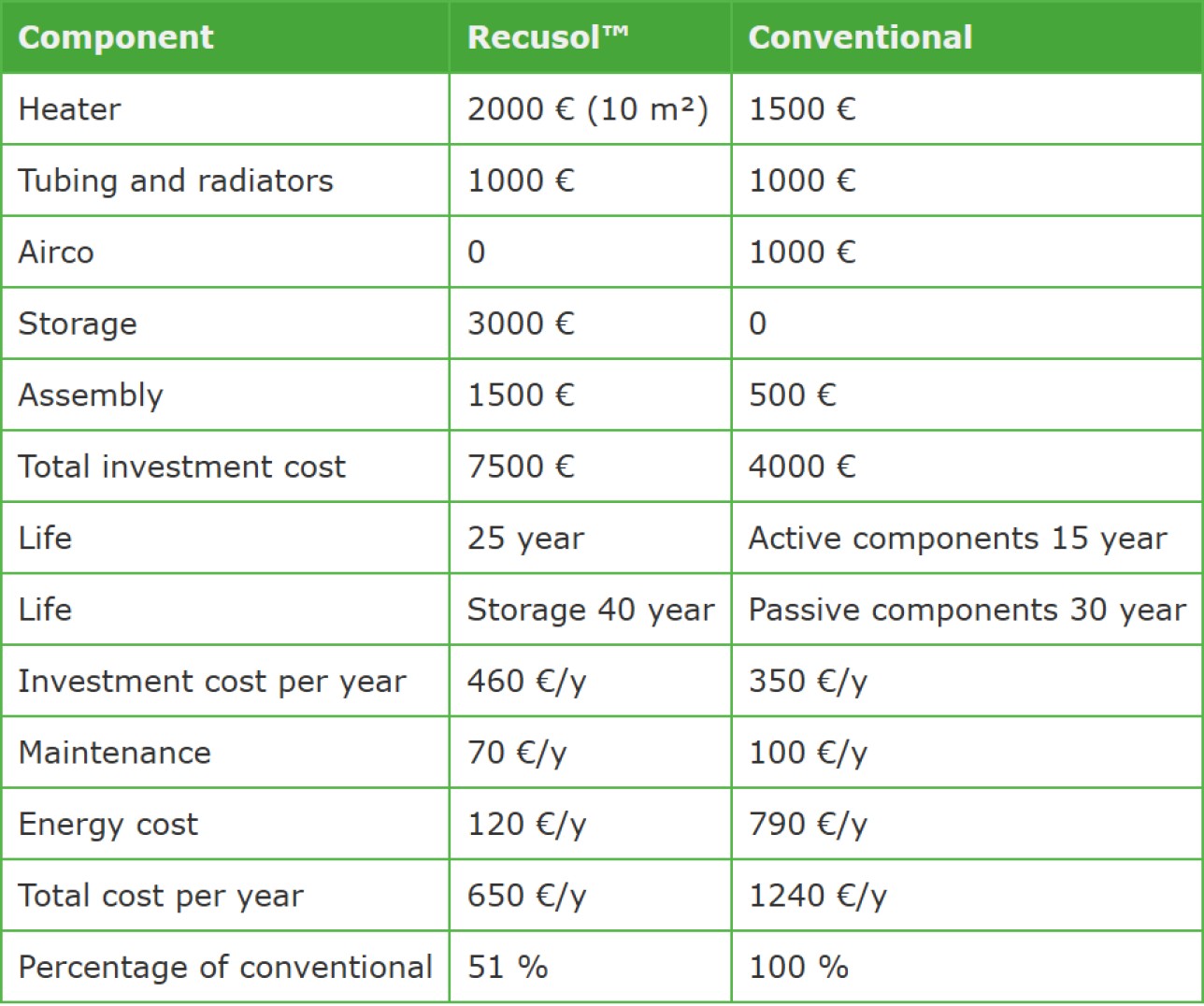
Table 2: cost of Recusol™ compared with conventional central heating and airco
For a standard family house 49% on costs are saved.
Also 2500 kg CO2 is saved per year.
If the house is poor insulated (K=value 184 W/K instead of 92 W/K) the total costs are resp. for the Recusol™ 1006 €/y and for the conventional central heating 1603 €/y, which is 38% cheaper and significant too. However compared with the well insulated house 500 kg more CO2 per year is used, so for the environment it is recommended to apply a well insulated house.
Temperature scenario´s
Based on measured temperatures and sun input at De Bilt the Netherlands the temperature in a standard family house is calculated for the years 2001 up to the beginning of 2007.
Figure 9 shows the temperatures and possible extra heating by an extra mood heater during the heating season. Figure 10 shows the temperatures during the cooling season.
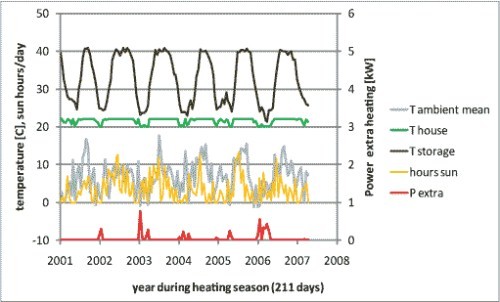
Figure 9: Temperatures of a standard family house with a 20 m² Recusol™ during heating season at De Bilt the Netherlands
The heating by the 20 m² Recusol™ and the storage (30 m³ soil) is sufficient to heat the house, only in 2003 and 2006 a small 1000 W mood heater would have been needed with a mean consumption of 47 m³/y NG. If a 10 m² Recusol™ is applied in all years an extra heater of 2000 W would have been needed, with a mean consumption of 140 m³/y of NG.
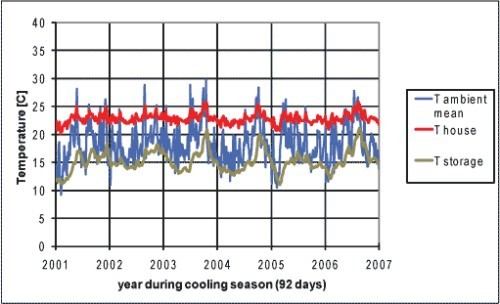
Figure 10: Temperatures of a standard family house with a 10 m² Recusol™ during cooling season at De Bilt the Netherlands
With the storage of cold from the night air, only for a short period in 2003 and 2006 the temperature of the house exceeded 25 ºC.
Critical points
Critical points are:
• Dirt scale on the Recusol™ surfaces
• Condense
• Ice
Most of the dirt will be removed by the filters placed before the waste and the fresh air input. Because dirt also absorbs heat, from which a large part is recovered, the Recusol™ is not that sensitive to dirt. Possible micro organisms will regularly be killed by the heat of the sun, while due to the transparent Recusol™ dirt can easily be detected and possibly break down by UV light or special gasses.
In the heat exchange channels special drains will be applied which removes the condense to the bottom, where it should be tapped regularly.
If ice is present it can be removed by turning around the flows inside the Recusol™, such that the cold side will be heated by the hot input waste air, which will melt the ice.
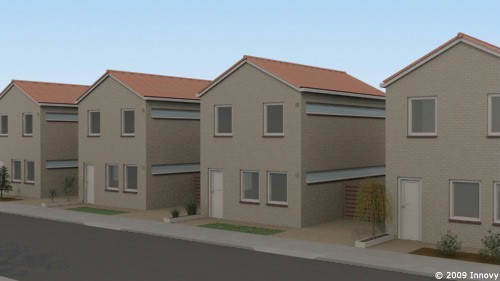
Figure 11: Without heat absorber; high efficient day light window Recupane™ (U-value around 0.2 W/Km²) and ventilation per room with heat recovery and extra passive heat from (sun) light
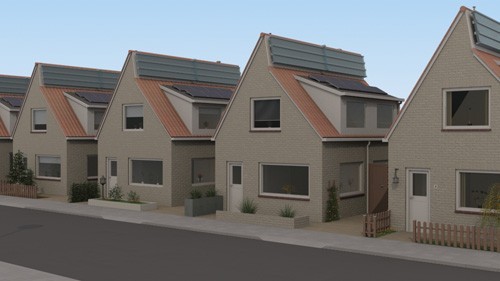
Figure 12: Example Recusol™ in combination with PV both with its own preferred azimuth angle (resp. January mean and year mean)
-
1-apr-2009
© 2009 Innovy
